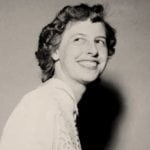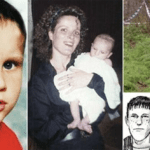 Music
Music  Music
Music  History
History 10 Less Than Jolly Events That Occurred on December 25
 Weird Stuff
Weird Stuff 10 Funny Ways That Researchers Overthink Christmas
 Politics
Politics 10 Political Scandals That Sent Crowds Into the Streets
 Weird Stuff
Weird Stuff Ten Bizarre Facts About The Doge Meme
 Our World
Our World 10 Ways Your Christmas Tree Is More Lit Than You Think
 Movies and TV
Movies and TV The 10 Coolest Stars to Set Sail on The Love Boat
 History
History 10 Things You Didn’t Know About the American National Anthem
 Technology
Technology Top 10 Everyday Tech Buzzwords That Hide a Darker Past
 Humans
Humans 10 Everyday Human Behaviors That Are Actually Survival Instincts
 Music
Music 10 Surprising Origin Stories of Your Favorite Holiday Songs
 History
History 10 Less Than Jolly Events That Occurred on December 25
 Weird Stuff
Weird Stuff 10 Funny Ways That Researchers Overthink Christmas
Who's Behind Listverse?

Jamie Frater
Head Editor
Jamie founded Listverse due to an insatiable desire to share fascinating, obscure, and bizarre facts. He has been a guest speaker on numerous national radio and television stations and is a five time published author.
More About Us Politics
Politics 10 Political Scandals That Sent Crowds Into the Streets
 Weird Stuff
Weird Stuff Ten Bizarre Facts About The Doge Meme
 Our World
Our World 10 Ways Your Christmas Tree Is More Lit Than You Think
 Movies and TV
Movies and TV The 10 Coolest Stars to Set Sail on The Love Boat
 History
History 10 Things You Didn’t Know About the American National Anthem
 Technology
Technology Top 10 Everyday Tech Buzzwords That Hide a Darker Past
 Humans
Humans 10 Everyday Human Behaviors That Are Actually Survival Instincts
10 Tragic Cases Of Life Imitating Art
The idea that life often mirrors art is one with which many of us are familiar. In most cases, these parallels between fact and fiction feel like harmless fun. There are times, however, in which the blurred line between the two can start to feel unsettling, as though there was more at play than simple coincidence.
From novels that proved eerily prophetic to famous faces who met their end in uncannily familiar ways, here are some of the most tragic examples of life imitating art.
10 Carrie Fisher And The Fate of Princess Leia
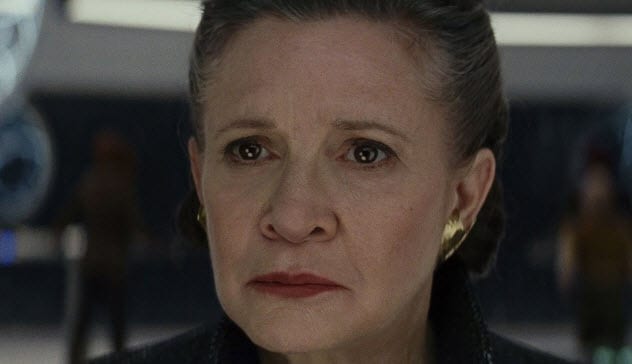
We picture her with cinnamon bun hair, a flowing white gown, and a blaster gun in hand. Indeed, actress and writer Carrie Fisher is best remembered as the woman who breathed life into the iconic Star Wars heroine, Princess Leia.
Fisher experienced a medical emergency on a flight from London to Los Angeles in late 2016. After four days in a coma, she sadly died at age 60. Shortly before her death, Fisher had finished filming scenes for Star Wars: Episode VIII—The Last Jedi, her fifth official outing as Leia.
Though having the opportunity to see her once again on the big screen was welcomed by many as a touching tribute, others—including Fisher’s own brother—found certain scenes hard to swallow. He pointed out the uncomfortable irony that Episode VIII saw Leia falling into a coma, a sequence the actress had filmed mere months before suffering the same fate in real life.[1]
Though Fisher tragically never regained consciousness, her fictional counterpart lived to fight another day. As such, Fisher’s legacy will live on through the character and the scenes she had already completed. It is a bittersweet silver lining that does not quite take the sting out of her untimely loss.
9 The Disappearance Of Agatha Christie
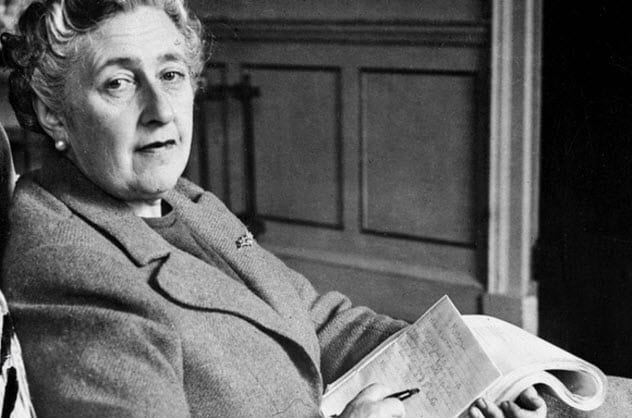
Agatha Christie is the best-selling novelist of all time. Her world-famous crime stories have sold more than a billion copies in English and a further billion copies in translation. So, it is certainly fair to say that she knew a thing or two about penning a compelling mystery.
However, it was her own personal affairs that had the public gripped in December 1926. In an incident that could have been lifted right from one of her books, Christie disappeared without notice.
Her uncharacteristic and unexplained absence quickly made headlines, with thousands of volunteers scouring the country in search of clues. When her car was found abandoned near a quarry, her coat and ID discarded inside, many feared the worst. When it then emerged that her husband had recently announced plans to leave her for another woman, suspicion fell on him.[2]
Christie would eventually be found alive, 11 days after first disappearing. But it was not exactly a happy ending. Somewhat disturbingly, she had checked into a hotel using the name of her husband’s new lover and claimed to remember nothing of the ordeal.
Doctors would diagnose concussion and amnesia, and the author would speak little of the difficult period again. New theories suggest that she had contemplated suicide and hid herself away in a bout of religion-fueled shame.
The more commonly held belief is that the stress of her husband’s betrayal added to her existing depression over the loss of her mother. The combination of the two proved to be too much and triggered a mental breakdown.
8 Mary Shelley And Her Husband’s Drowning

Mary Shelley is the author of the revered horror novel Frankenstein. Another of her major works, Mathilda, was not released until years after her death because its publication was suppressed by her father. Due to its gothic exploration of an incestuous infatuation, he feared that readers would think it was autobiographical.
In the novella, there is a scene which sees the titular heroine rushing toward the sea. She is distressed by the news that someone she loves may have drowned, but she would arrive too late to save him.[3]
A couple of years after it was written, Shelley would find herself mirroring her character’s actions when her own husband met a similar watery end. Shelley later commented on the uncanny comparisons between the two incidents. She described how she identified with her tragic heroine’s plight and had come to consider the book “prophetic.”
7 H.G. Wells And The Atom Bomb
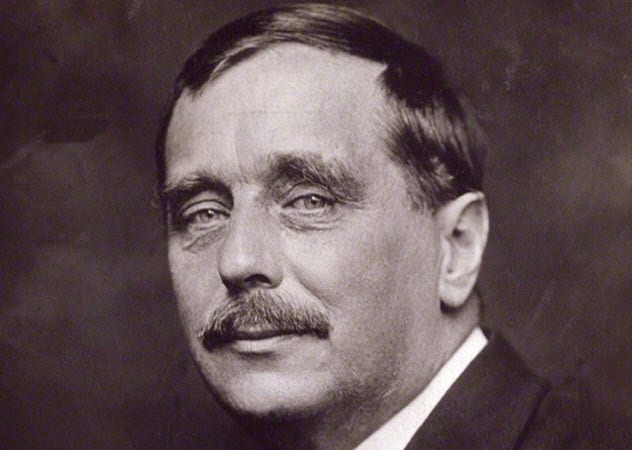
History best remembers H.G. Wells as the author of enduring sci-fi classics such as The War of the Worlds, The Time Machine, and The Invisible Man. As Wells was a pioneer of the genre, his writing was often considered ahead of its time, with prescient ideas and technologies that would later become reality.
One of his most disturbingly accurate predictions appeared in his 1914 novel, The World Set Free. He described a weapon of unprecedented power that would be dropped from planes to unleash untold suffering on the world below. He called it the “atomic bomb.”
Three decades later, a frighteningly similar nuclear weapon did indeed emerge and was even given the same name. When the bomb was unleashed upon Hiroshima and Nagasaki, even those involved in its development were said to be disturbed by the sheer scale of misery that it caused. Perhaps things would have turned out differently had they paid closer attention to the moral warnings that had been present in Wells’s fiction.[4]
6 A Famous Dog’s Grisly End
The 1989 comedy-action film K-9 is about a cop and his faithful furry companion. The movie’s climax sees the dog shot while trying to apprehend a criminal. Though greatly injured, he manages to pull through, and they all live happily ever after.
In real life, things worked out considerably less well. Koton, the four-legged star of the film, was an actual police dog away from the big screen. He had a successful career and was responsible for more than 24 arrests.
Heartbreakingly, just like his character before him, Koton was shot in 1991 while pursuing a suspect. Unlike his fictional counterpart, he sadly didn’t make it.[5]
5 The Death Of Paul Walker
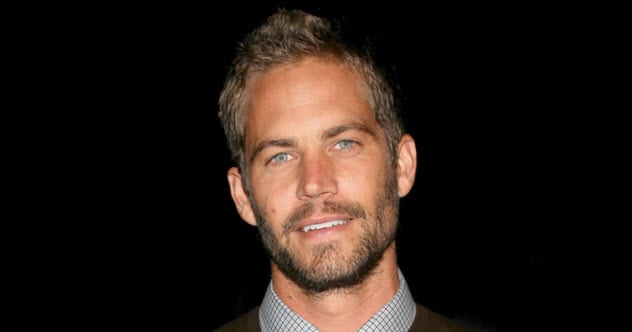
US actor Paul Walker is best known for his long-running role in the big-budget The Fast and the Furious franchise. The films are high-octane action flicks, full of high-speed car chases and dramatic stunt sequences.
It is this fact that made his death in 2013 all the more difficult for his fans and loved ones to accept. At age 40, Walker was killed in a car crash when the Porsche driven by his friend collided with a lamppost and became engulfed in flames.
Production of the seventh film in the series was already well underway at the time of his passing. Filmmakers decided to use existing footage of the star to craft a suitable outcome for his character. This was deemed an appropriate and sensitive way to preserve the actor’s memory.[6]
4 Eva Cassidy And ‘Fields Of Gold’
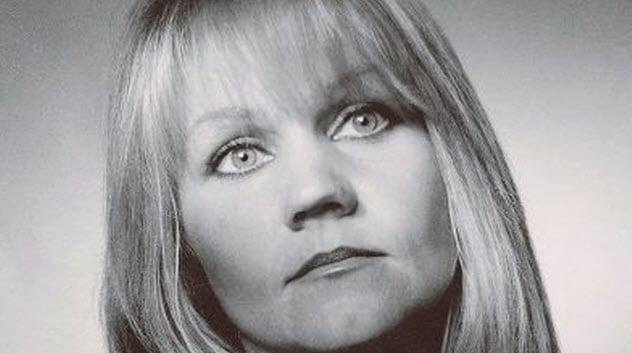
Given the widespread admiration that exists for Eva Cassidy now, it is hard to believe that she was virtually unknown at the time of her death from melanoma in 1996. Then just 33 years old, she had been a regular on the local music scene in Washington DC.
But with most of her recordings unreleased, international audiences were still largely unaware of her. These various unheard tracks were compiled and released posthumously, which led to extensive radio play, platinum sales, and a whole new level of appreciation for the tragic star.
Shortly before her death, however, Cassidy had released Live at Blues Alley, a collection of intimate recordings. It would prove to be the last release made during her lifetime. This album included her version of “Fields of Gold.” Originally by Sting, it is a track that has endured as one of her most recognizable and beloved songs.[7]
The touching irony of the final verse—with lyrics that speak of being remembered after you are gone—was not lost on many. This sentiment took on a whole new meaning when the singer was dead mere months after the song’s release. Thanks to the music she left behind, Cassidy has at least been remembered fondly, just as the song wished for.
3 Bill Turnbull And Stand Up To Cancer

Bill Turnbull is a journalist and broadcaster and a familiar face on UK television. Fans of The Great British Bake Off from around the world may also recognize him from his stint in the famous tent as part of a charity special.
The episode, which first aired in early 2018, was produced in aid of Stand Up to Cancer (SU2C). The aim was to raise both awareness about the importance of getting health checks and funds to help improve treatment and survival rates.
In a twist of painful irony, Turnbull was diagnosed with prostate cancer while filming was taking place. Though he underwent several rounds of chemotherapy to slow the disease’s spread, he subsequently announced that his case is terminal. Facing the situation with dignity, he has used his story as a means to further drive home the importance of regular health screening.[8]
2 J.K. Rowling And The Loss Of Her Mother

J.K. Rowling is best known as the author behind the Harry Potter series. Rowling had been working on the first book for around six months when her mother died from multiple sclerosis. She was just 45 years old and completely unaware of the fame and fortune that awaited her daughter.
At this time, with the book still in an early draft form, the eponymous boy wizard had already been written as an orphan. Suddenly finding herself without parental ties of her own, however, Rowling was able to identify with her fictional hero’s sadness on a much greater level.
This clearer understanding of the grief she had written for him was so profound that it prompted Rowling to rework the scenes concerning his loss. His parents’ deaths were no longer glossed over. Instead, they were imbued with a heavy dose of poignancy and emotional weight.
As Rowling said herself, “Everything deepened and darkened.”[9] Though this was to the benefit of the story, it should not be forgotten that Rowling had to endure Harry’s pain firsthand to gain this heartfelt insight.
1 The Sinking Of The Titanic
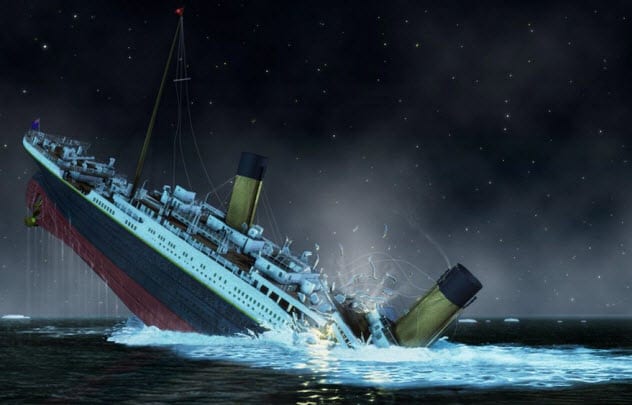
Morgan Robertson’s 1898 novella, Futility (aka The Wreck of the Titan), was about a vast, luxurious ocean liner that struck an iceberg and sank, killing almost everyone on board.
Sound familiar?
Yes, indeed, the sinking of the Titanic is another example of a horrific real-life event that was eerily foretold in fiction. The book was published 14 years before the Titanic’s doomed voyage, but the name and fate of the two ships were not the only striking similarities.
It is little wonder that many suspected Robertson of clairvoyance once you start delving into the many unnerving parallels. These include the size and capacity of the two vessels as well as intricate, finer details such as the number of lifeboats present.[10]
Even the time and date of each ship’s impact with the iceberg are nigh on identical. Prophecy? Coincidence? Whatever the case may be, it is one of the most tragic cases of life imitating art the world has yet seen.
Callum McLaughlin is a freelance writer based in Scotland. He writes content on a variety of subjects for blogs, websites, and magazines. He can be found on Twitter, where he’ll invariably be chatting about books, cats, and tea.
Read about more tragic cases involving Hollywood actors on 10 Movie Scenes That Predicted Tragic Moments In Actors’ Lives and 10 Tragic Backgrounds Of Beloved Hollywood Stars.





